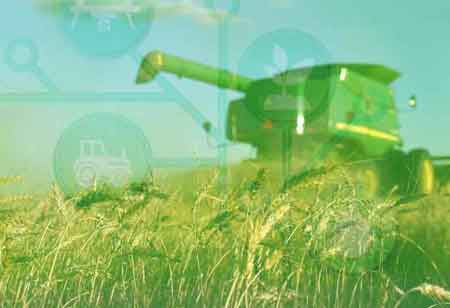Thank you for Subscribing to Agri Business Review Weekly Brief
Classification of Crops: What You Need to Know
Crop types can be classified in a variety of ways in agriculture.

By
Agri Business Review | Friday, April 28, 2023
Stay ahead of the industry with exclusive feature stories on the top companies, expert insights and the latest news delivered straight to your inbox. Subscribe today.
Crops are classified into various types based on their uses, such as food, fiber, forage, ornamental, oil, and industrial.
FREMONT, CA: Crop types can be classified in a variety of ways in agriculture. The first thing to find is a list of different types of crops based on their commercial purposes. In recent years, a new group of genetically modified organisms has become an important part of agriculture, making food more accessible while also having some negative environmental effects.
When selecting crops to plant and planning agricultural activities, farmers must consider the characteristics of each type. The use of modern technology will be especially beneficial for the classification and management of large-scale plant types.
Crop types based on their uses: The following list of crop types describes their uses and economic value rather than providing a precise scientific classification of plants. Crops can be classified as food, forage, fiber, oil, ornamental, or industrial, depending on their intended use.
Food crops: Historically, food plants were the first to be harvested and cultivated. Humans consume them. The strategic importance of food plants, particularly grains, cannot be overstated.
Fiber Crops: Fiber crops are plants that produce fiber for textiles, cordage, filling, and paper. Cotton, hemp, jute, kenaf, and flax are well-known fiber plants. It is possible to convert some of them into ethanol as agricultural biomass.
Forage Crops: Forage plants contain nutrients that animals require for growth and development. In pasture management, they are grown for livestock consumption. Forage crops include sorghum, alfalfa, barley, oats, millet, soybeans, wheat, and maize.
Based on how it is processed, forage can be classified into two types:
Forage that has been cut, dried in the field, and stored is hay;
Plants are harvested and stored in conditions that allow them to be split (fermented) into acids to produce silage. Silage crops include perennial grasses and legumes.
Forage production has skyrocketed because of the increased global demand for meat. Increasing forage production has altered the agricultural landscape, resulting in massive deforestation for grazing pastures.
Oil Crops: Plants can be processed and broken down into their primary components, including oil, thanks to technological advances over the last century. Oil crops are now the second most important determinant of the agricultural economy, after cereals, and the third largest land user.
Plants of this type include soybeans, sunflower seeds, rapeseed, canola, and peanuts. Oils, dietary fibers, proteins, minerals, and vitamins are abundant in them. As well as producing oil for human consumption, these plants are used in various industries, such as soaps, paints, machinery lubricants, and fuel.
Ornamental Crops: In parks, gardens, and landscaping projects, ornamental plants are grown for decorative purposes. Decorative plants include ivy, oleander, holly, tulips, and azaleas.
Industrial Crops: Plants grown for industrial purposes are grown for profit. Cotton, jute, sugarcane, sugarbeet, coffee, tea, tobacco, coconut, and soybeans are all cash crops.





